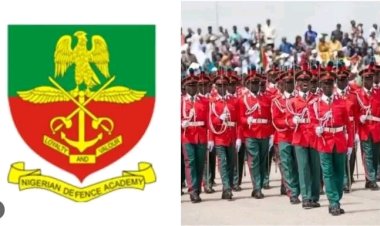Female Enrolment in Adult Literacy Programs Drops to 38.32% in 2022 - NBS Report
According to the report, female enrolment in adult literacy programs increased from 40.55% in 2020 to 46.10% in 2021 before dropping to 38.32% in 2022. Male enrolment was consistently higher, with 59.45% in 2020, 53.90% in 2021, and 61.68% in 2022.

The National Bureau of Statistics (NBS) has reported a significant decline in female enrolment in adult and basic literacy programs, which fell to 38.32% in 2022. This finding is part of the NBS Statistical Report on Women and Men in Nigeria 2022, released on Wednesday.
The comprehensive report, which examines data from 2020 to 2022, covers six key areas: Population, Health, Education, Employment, Governance, and Violence Against Women and Crime.
According to the report, female enrolment in adult literacy programs increased from 40.55% in 2020 to 46.10% in 2021 before dropping to 38.32% in 2022. Male enrolment was consistently higher, with 59.45% in 2020, 53.90% in 2021, and 61.68% in 2022.
In terms of regional performance, Lagos State had the highest female enrolment in 2020 with 20,345 participants. Sokoto State led in 2021 with 203,608 enrolments, and Bauchi State had the highest in 2022 with 60,698. Conversely, Adamawa and Yobe recorded the lowest enrolments during these years.
The report also highlighted that female enrolment in nomadic schools was below average, dropping from 49.28% in 2020 to 44.21% in 2022.
In primary education, female enrolment was 48.50% in 2020, which rose slightly to 49.03% in 2021 before declining to 48.92% in 2022. Male enrolment remained higher each year.
In junior secondary schools, female enrolment was 49.80% in 2020, decreased to 48.73% in 2021, and increased to 51.47% in 2022. In senior secondary schools, female enrolment was 49.10% in 2020 and slightly decreased to 48.82% in 2021.
Higher education figures from the National Universities Commission showed female enrolment at 43.46% for the 2019/2020 academic session and 44.49% for the 2020/2021 session.
The report revealed a notable percentage of teachers without proper certification. In early childhood care and education, 14.03% of female and 4.32% of male teachers were uncertified. In primary schools, 6.47% of female and 15.45% of male teachers lacked certification.
INCASE YOU MISSED:Pure Water Seller With Stellar JAMB Score Earns University Scholarship
Additional literacy and media engagement statistics indicated that 72.30% of women and 77.30% of men aged 15-24 were literate in English. Newspaper readership was 7.40% for women and 17.20% for men weekly, while 34.40% of women and 50.80% of men listened to the radio weekly. Television viewership was 42.70% for women and 48.90% for men.
Computer usage was reported at 13.40% for women and 21.80% for men, while internet usage was 24.00% for women and 41.60% for men. Mobile phone ownership was 58.2% for women and 73.4% for men, with 78.10% of females and 65.80% of males using their phones weekly in the last three months.





